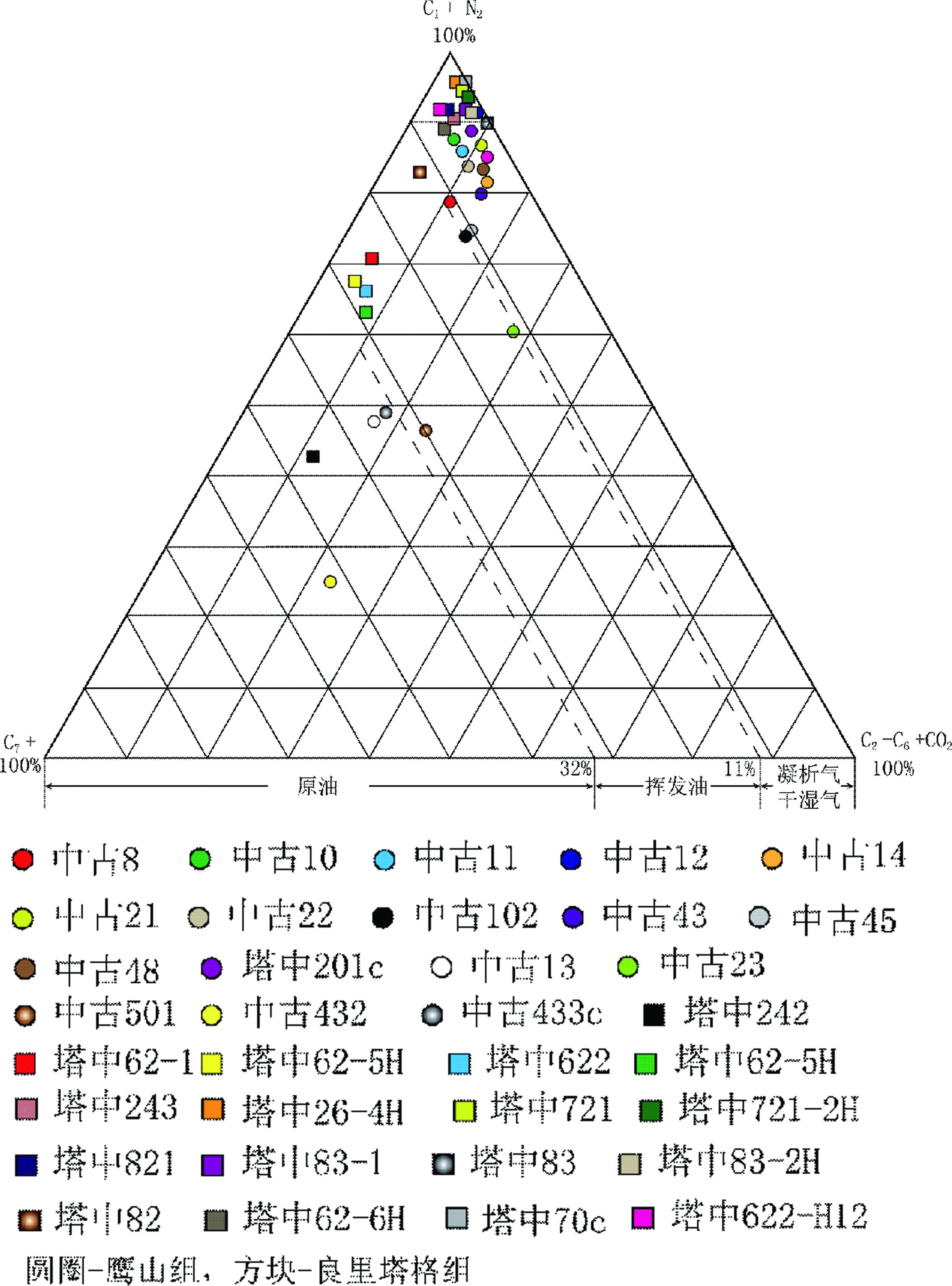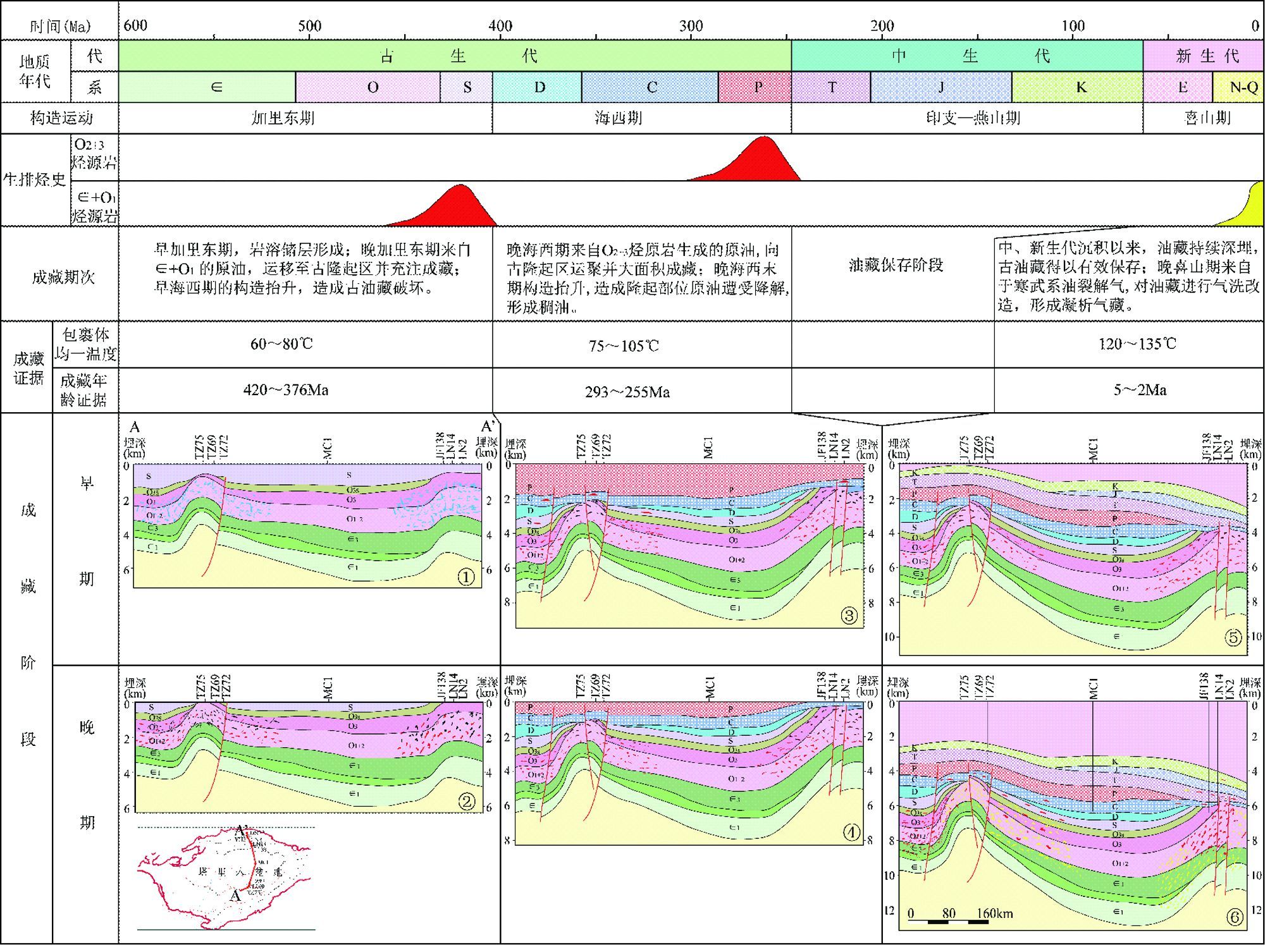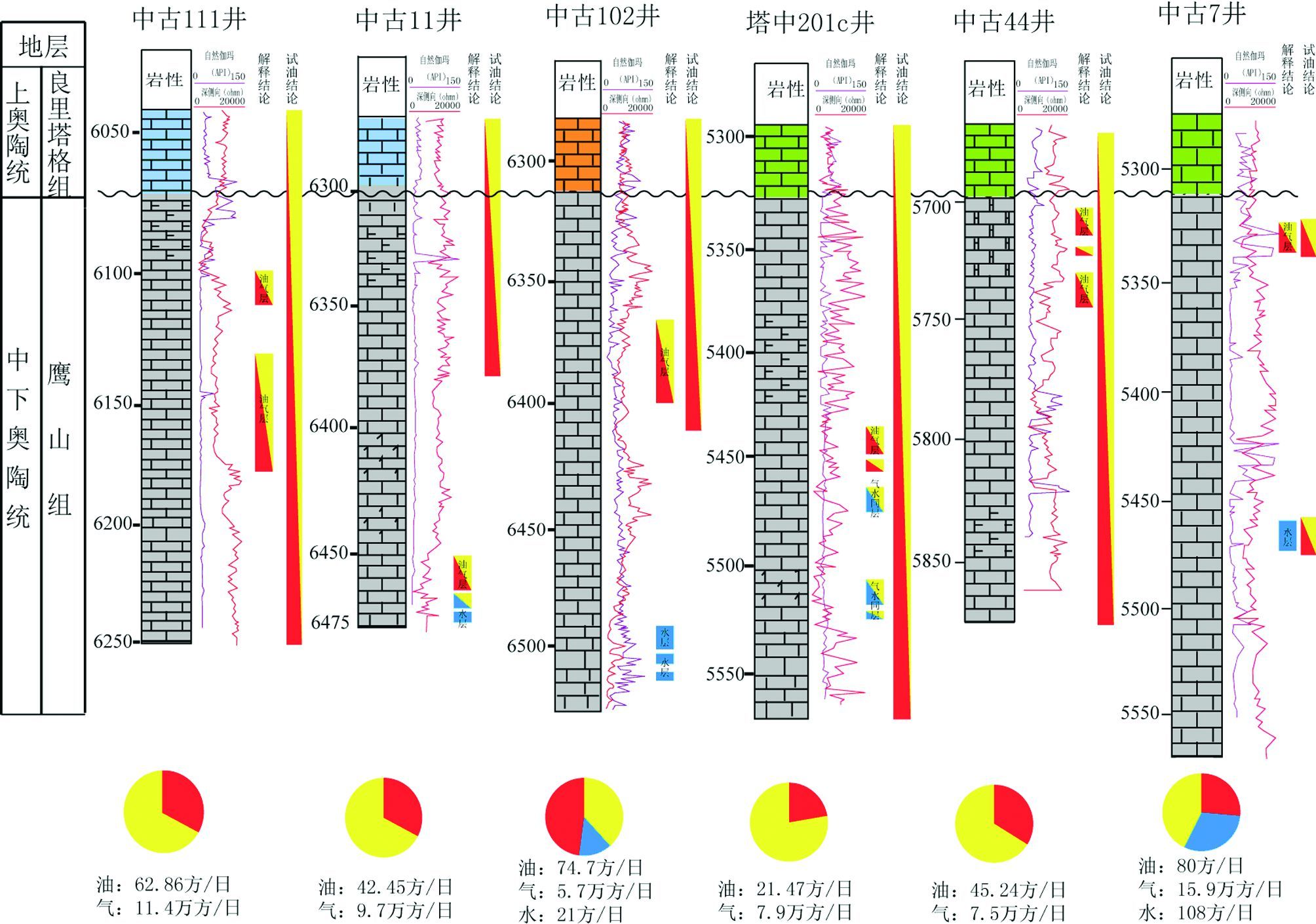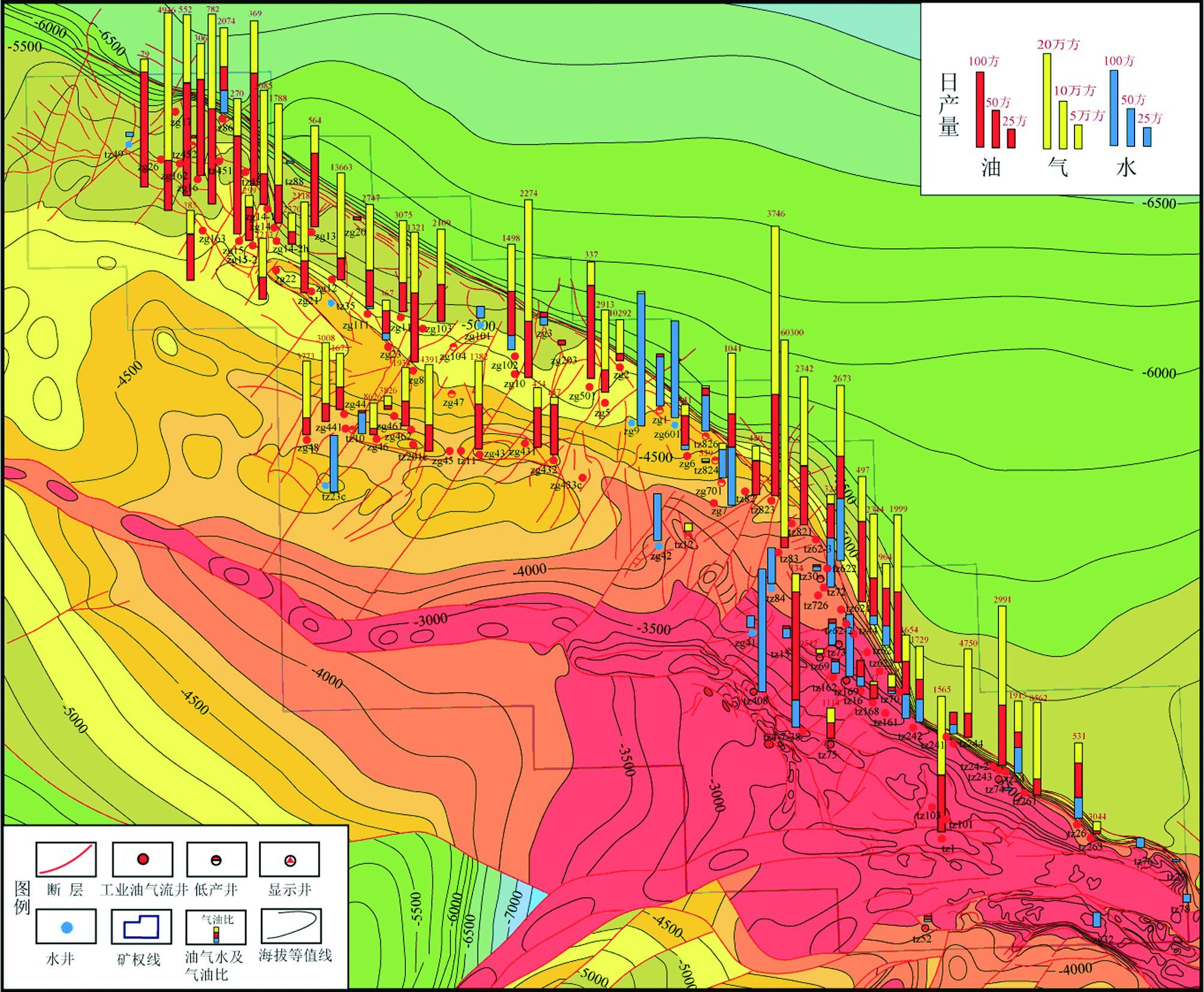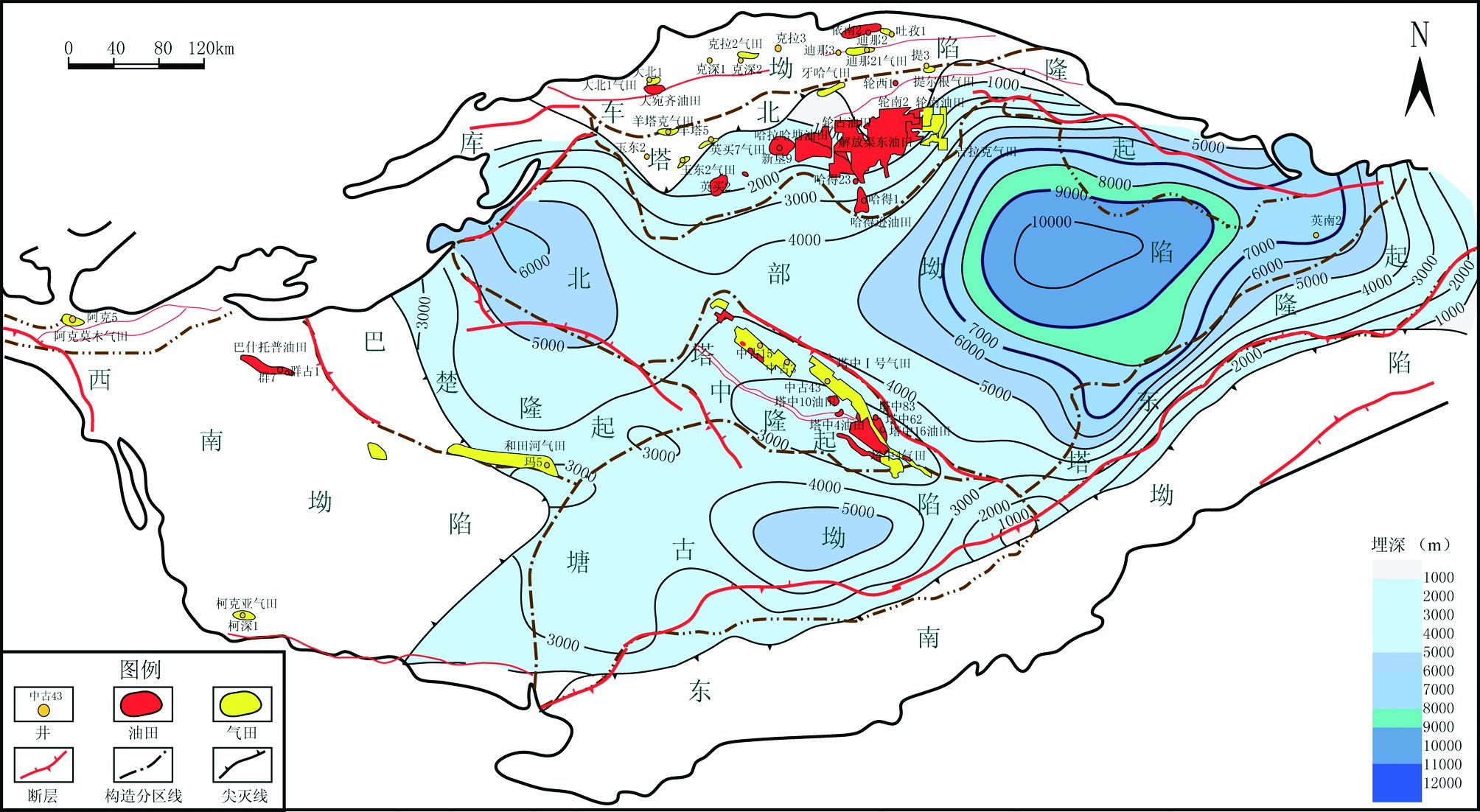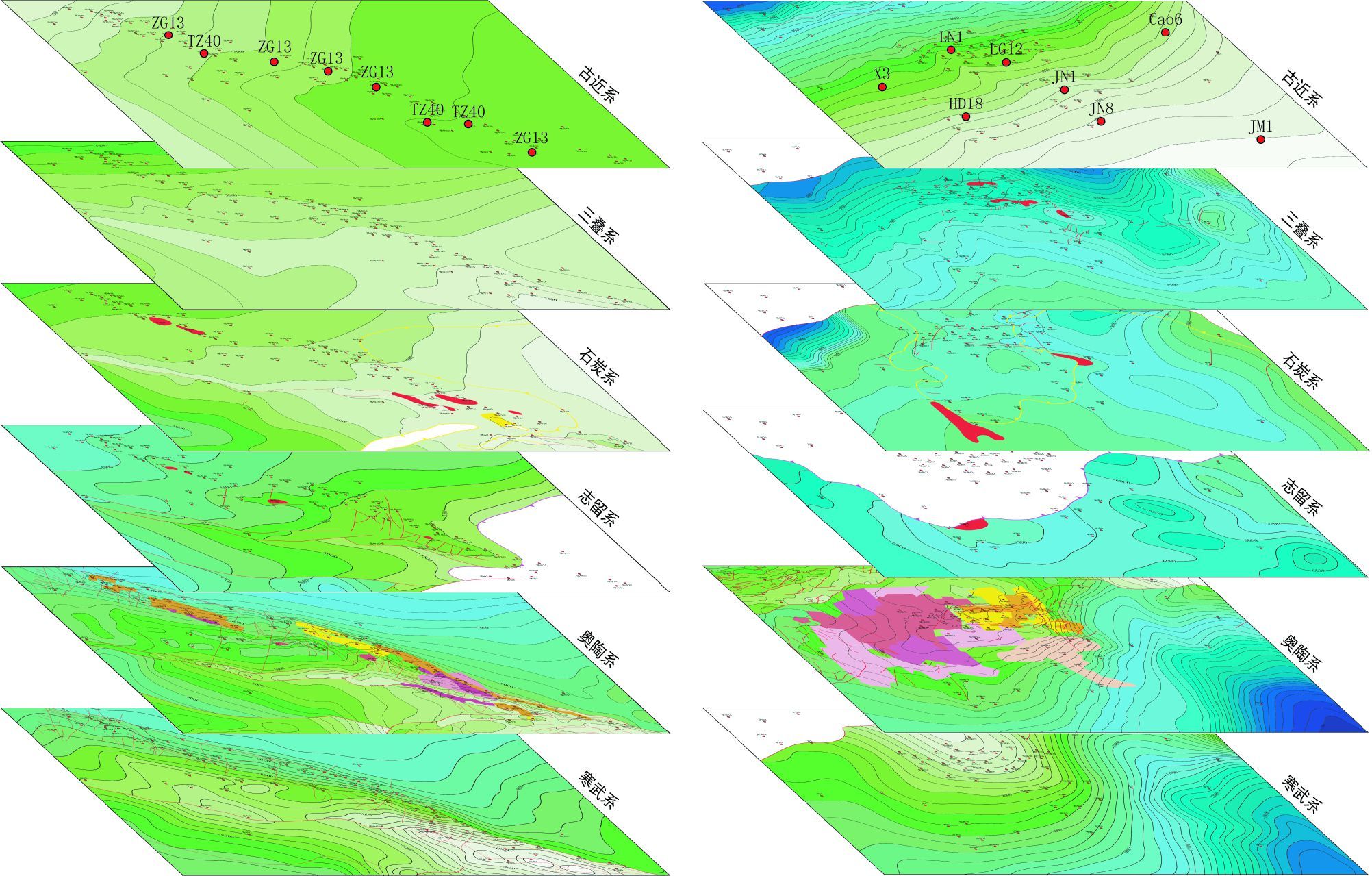True exploration potential of marine oils in the Tarim Basin
-
摘要:
塔里木盆地古生界蕴藏了丰富的海相油气资源,储集层目前埋深在5500~10000m。深部流体的相态或者说液相石油大量消失的深度下限是学术界比较关心的理论问题,而塔里木盆地海相到底富油还是富气也是关系到塔里木油田未来产能规划的现实问题。通过对塔里木盆地原油的热稳定性分析,特别是低地温梯度和晚期快速深埋过程的补偿效应研究,认为液态石油大量消亡(油裂解成气) 的深度下限在9000~10000m以下,对应的储层温度大于210℃,在此深度之上液态石油可以大量存在。通过对油气聚集与保存的关键地质科学问题的研究,认为晚海西期是台盆区油藏的主要成藏期,烃源灶区生成的油气主要分布在稳定的古隆起及其围斜区域;而晚海西期这些古隆起及其围斜区碳酸盐岩储层埋藏深度在800~2500m范围内,岩溶储集体发育,这是台盆区形成大面积层状油气聚集的基础,也决定了现今埋深在7000~9000m深度范围内的斜坡区将成为黑油和凝析油的重要勘探接替区。
Abstract:Abundant oil and natural gas is embedded in Palaeozoic strata of the Tarim Basin in which reservoirs are buried at the depth about 5500~10000m. The phase states of hydrocarbon fluids in depth or the depth where mass liquid oil lost is a concerned theoretical question, and the question that marine facies in the Tarim Basin rich in gas or oil related to the future deliverability plan of Tarim oil field. We studied the thermal stability of oil in the Tarim Basin, especially researched the compensating effect of low geothermal gradient and quick deep burial process, considered that the depth where oil cracking began is at 9000~10000m or deeper, and the correspondent reservoir temperature is higher than 210℃, a mount of oil may exist above this depth. Though the research of key geosciences problem of hydrocarbon migration and accumulation, it demonstrated that hydrocarbon mainly accumulated in Late Hercynian stage in the platform area, and hydrocarbon generated from source rocks are primarily charged into steadily existed paleo-uplifts and the slope area; during Late Hercynian stage, those carbonate reservoirs were buried in the depth of 800~2500m and karst reservoirs developed, which is the base of blanket hydrocarbon accumulation and consequently implied that reservoirs located in the slope area buried in depth of 7000~9000m will be the important prospecting region of black oil and condensate oil.
-
Key words:
- Marine strata /
- Black oil /
- Cracked gas /
- Exploration potential /
- Ordovician /
- Tarim Basin
-

-
-
Behar F, Kressman S, Rudkiewicz JL and Vandenbrouke M. 1992. Experimental simulation in a confined system and kinetic modeling of kerogen and oil cracking. Organic Geochemistry, 19: 173-189
Behar F, Lorant F and Mazeas L. 2008. Elaboration of a new compositional kinetic schema for oil cracking. Organic Geochemistry, 39: 764-782
Bjorøy M, Williams JA, Dolcater DL and Winters JC. 1988. Variation in hydrocarbon distribution in artificially matured oils. Organic Geochemistry, 13: 901-913
Braun RL and Burnham AK. 1987. Analysis of chemical reaction kinetics using a distribution of activationenergies and simpler models. Energy and Fuels, 1: 153-161
Cai CF, Warden RH, Bottrell SH, Wang LS and Yang CC. 2003. Thermochemical sulphate reduction and the generation of hydrogen sulphide and thiols (mercaptans) in Triassic carbonate reservoirs from the Sichuan basin, China. Chemical Geology, 202: 39-57
China National Petroleum Corporation. 1995. People's Republic of China Nature Gas and Oil Professional Criterion: Method and Requirement of Defining Condensate Pool Phase Feature. Beijing: Petroleum Industry Press, 10-11(in Chinese)
Dai JX. 1992. Identification and distinction of various alkane gases. Science in China (Series B), 35(10): 1246-1257
Dieckmann V, Horsfield B, Welte DH and Schenk HJ. 1998. Kinetics of petroleum generation and cracking by programmed-temperature closed-system pyrolysis of Toarcian Shales. Fuel, 77(1-2): 23-31
Gao ZY, Zhang SC, Zhang XY and Zhu RK. 2007. Relations between spatial distribution and sequence types of the Cambrian-Ordovician marine source rocks in Tarim Basin. Chinese Science bulletin, 52(Suppl.): 92-103
Hanson AD, Zhang SC, Moldowan JM, Liang DG and Zhang BM. 2000. Molecular organic geochemistry of the Tarim Basin, Northwest China. AAPG Bulletin, 84(8): 1109-1128
Han JF, Yu HF, Zhang HZ, Luo CS, Jing B, Huang GJ, Ji YG and Dong RX. 2008. Characteristics of hydrocarbon enrichment in the Lower Ordovician carbonate rock weathering crust on the northern slope zone of Tazhong area. Oil & Gas Geology, 29(2): 167-173(in Chinese with English abstract)
He K, Zhang SC and Mi JK. 2011. Research on the kinetics and controlling factors for oil cracking. Natural Gas Geoscience, 22(2): 211-218(in Chinese with English abstract)
Hill RJ, Tang Y and Kaplan IR. 2003. Insight into oil cracking based on laboratory experiments. Organic Geochemistry, 34: 1651-1672
Horsfield B, Schenk HJ, Mills N and Welte DH. 1992. Closed-system programmed-temperature pyrolysis for simulating the conversion of oil to gas in a deep petroleum reservoir. Organic Geochemistry, 19: 191-204
Huang SJ, Qing HR, Hu ZW, Zhou ML, Feng WL, Wang CM, Gao XY and Wang QD. 2007. Closed-system dolomitization and the significance for petroleum and economic geology: An example from Feixianguan carbonates, Triassic NE Sichuan basin of China. Acta Petrologica Sinica, 23(11): 2955-2962(in Chinese with English abstract)
Huang SJ, Tong HP, Liu LH, Hu ZW, Zhang XH, Xun JL and Huang KK. 2009. Petrography, geochemistry and dolomitization mechanism of dolomite in Triassic, NE Sichuan, China. Acta Petrologica Sinica, 25(10): 2363-2372(in Chinese with English abstract)
Hunt JM. 1996. Petroleum Geochemistry and Geology. 2nd Edition. New York: Freeman WH and Co.
Jia CZ. 1999. Structural characteristics and oil/gas accumulative regularity in Tarim basin. Xinjiang Petroleum Geology, 20(3): 177-183(in Chinese with English abstract)
Jiang NH, Zhu GY, Zhang SC and Wang ZJ. 2007. Detection of 2-Thiaadamantanes in the oil from Well TZ-83 in Tarim Basin and its geological implication. Chinese Science Bulletin, 52(24): 2871-2875(in Chinese)
Kuo LC and Michael GE. 1994. A multicomponent oil-cracking kinetics model for modeling preservation and composition reservoired oils. Organic Geochemistry, 21: 911-925
Lewan MD. 1997. Experiments on the role of water in petroleum formation. Geochimica et Cosmochimica Acta, 61: 3691-3723
Li SM, Pang XQ, Jin ZJ, Yang HJ, Xiao ZX, Gu QY and Zhang BS. 2010. Petroleum source in the Tazhong Uplift, Tarim Basin: New insights from geochemical and fluid inclusion data. Organic Geochemistry, 41(6): 531-553
Lin CS, Yang HJ, Liu JY, Cai ZZ, Peng L, Yang XF and Yang YH. 2009. Paleostructural geomorphology of the Paleozoic central uplift belt and its constraint on the development of depositional facies in the Tarim Basin. Science in China (Series D), 52(6): 823-834
Lv XX, Yang N, Zhou XY, Yang HJ and Li JJ. 2008. Influence of Ordovician carbonate reservoir beds in Tarim Basin by faulting. Science in China (Series D), 51(Suppl.II): 53-60
Ma YS, Guo TL, Zhu GY, Cai XY and Xie ZY. 2007. Simulated experiment evidences of the corrosion and reform actions of H2S to carbonate reservoirs: An example of Feixianguan Formation, East Sichuan. Chinese Science Bulletin, 52(Suppl. I): 178-192
Ma YS, Zhang SC, Guo TL, Zhu GY, Cai XY and Li MW. 2008. Petroleum geology of the Puguang sour gas field in the Sichuan Basin, SW China. Marine and Petroleum Geology, 25(4-5): 357-370
Machel HG. 2001. Bacterial and thermochemical sulfate reduction in diagenetic settings old and new insights. Sedimentary Geology, 140: 143-175
McCain WD Jr and Bridges B. 1994. Volatile oils and retrograde gases-what’s the difference? Petroleum Engineer International, 66: 35-36
Orr WL. 1977. Geologic and geochemical controls on the distribution of hydrogen sulfide in natural gas. In: Campos R and Goni J (eds.). Advances in Organic Geochemistry. Madrid, Spain: Pergamon Press, 571-597
Pan CC, Jiang LL, Liu JZ, Zhang SC and Zhu GY. 2010. The effects of calcite and montmorillonite on oil cracking in confined pyrolysis experiments. Organic Geochemistry, 41(7): 611-626
Pan WQ, Liu YF, Dickson JAD, Shen AJ, Han J, Ye Y, Gao HL, Guan P, Zhang LJ and Zheng XP. 2009. The geological model of hydrothermal activity in outcrop and the characteristics of carbonate hydrothermal karst of Lower Paleozoic in Tarim basin. Acta Sedimentologica Sinica, 27(5): 983-994(in Chinese with English abstract )
Pepper AS and Corvi PJ. 1995. Simple kinetic models of petroleum formation. Part II: oil-gas cracking. Marine and Petroleum Geology, 12(3): 321-340
Schenk HJ, Di Primo R and Horsfield B. 1997. The conversion of oil into gas in petroleum reservoirs. Part 1: Comparative kinetic investigation of gas generation from crude oils of lacustrine, marine and fluviodeltaic origin by programmed temperature closed-system pyrolysis. Organic Geochemistry, 26: 467-481
Tian H, Wang ZM, Xiao ZY, Li XQ and Xiao XM. 2006. Oil cracking to gases: Kinetic modeling and geological significance. Chinese Science Bulletin, 51(22): 2763-2770
Tian H, Xiao XM, Wilkins RWT, Li XQ and Gan HJ. 2007. Gas sources of the YN2 gas pool in the Tarim Basin: Evidence from gas generation and methane carbon isotope fractionation kinetics of source rocks and crude oils. Marine and Petroleum Geology, 24: 29-41
Tsuzuki N. Takeda N, Suzuki M and Yokoi K. 1999. The kinetic modeling of oil cracking by hydrothermal pyrolysis experiments. International Journal of Coal Geology, 39: 227-250
Ungerer P, Behar F, Villalba M, Heum OR and Audibert A. 1988. Kinetic modelling of oil cracking. Organic Geochemistry, 13: 857-868
Vandenbroucke M, Behar F and Rudkiewicz JL. 1999. Kinetic modelling of petroleum formation and cracking: Implications from the high pressure/high temperature Elgin Field (UK, North Sea). Organic Geochemistry, 30(9): 1105-1125
Wang ZM. 2004. The Exploration and Practice of Oil and Gas in Tarim Basin. Beijing: Petroleum Industry Press
Waples DW. 2000. The kinetics of in-reservoir oil destruction and gas formation: Constraints from experimental and empirical data, and from thermodynamics. Organic Geochemistry, 31: 553-575
Worden RH, Smalley PC and Oxtoby NH. 1996. The effects of thermochemical sulfate reduction upon formation water salinity and oxygen isotopes in carbonate reservoirs. Geochimica et Cosmochimica Acta, 60: 3925-3931
Worden RH, Smalley PC and Cross MM. 2000. The influences of rock fabric and mineralogy upon thermochemical sulphate reduction: Khu Formation, Abu Dhabi. Journal of Sedimentary Research, 70: 1210-1221
Yang DB, Zhu GY, Liu JJ, Su J, Zhang B and Fei AG. 2010. Distribution of global condensate gas field and major factors controlling its formation. Earth Science Frontiers, 17(1): 339-349(in Chinese with English abstract)
Yang HJ, Wu GH, Han JF, Wang XF and Ji YG. 2007. Characteristics of hydrocarbon enrichment along the Ordovician carbonate platform margin in the central uplift of Tarim Basin. Acta Petrolei Sinica, 28(4): 26-30(in Chinese with English abstract )
Yang HJ, Zhu GY, Han JF, Wu FF, Ji YG, Su J, Zhang HZ and Wang Y. 2011. Conditions and mechanism of hydrocarbon accumulation in large reef-bank karst oil/gas fields of Tazhong area, Tarim Basin. Acta Petrologica Sinica, 27(6): 1865-1885(in Chinese with English abstract)
Zhai XX, Gu Y, Qian YX, Jia CS, Wang J and Lin J. 2007. Geochemistry characteristics of Ta Shen-1Cambrian oil and gas reservoir in Tarim Basin. Petroleum Geology & Experiment, 29(4): 329-333(in Chinese with English abstract)
Zhang B, Zhao Z, Zhang SC and Chen JP. 2007. Discussion on marine source rocks thermal evolvement patterns in the Tarim Basin and Sichuan Basin, west China. Chinese Science Bulletin, 52(Suppl.): 141-149
Zhang BM and Liu JJ. 2009. Classification and characteristics of karst reservoirs in China and related theories. Petroleum Exploration and Development, 36(1): 12-29(in Chinese with English abstract)
Zhang BM, Liu JJ, Bian LZ, Shen YM, Jia JM, Zhang LP, Cao H and Yang XP. 2009. Reef-banks and reservoir-constructive diagenesis. Earth Science Frontiers, 16(1): 270-289(in Chinese with English abstract)
Zhang SC, Moldowan, JM, Graham SA, Liang DG, Chang E, Fago F and Hanson AD. 2000. Paleozoic oil-source rock correlations in the Tarim Basin, NW China. Organic Geochemistry, 31: 273-286
Zhang SC, Wang FY, Zhang BM, Liang DG and Zhao MJ. 2000. Middle-Upper Ordovician source rock geochemistry of the Tarim Basin. Acta Petrolei Sinica, 21(6): 23-28(in Chinese with English abstract)
Zhang SC, Zhang BM, Wang FY, Liang DG, He ZH, Zhao MJ and Bian LZ. 2001. Two formations of effective hydrocarbon source rock: I. Properties, sedimentary environment and controlling factors of organic matters. Progress in Natural Science, 11(3): 261-268(in Chinese with English abstract)
Zhang SC, Liang DG, Li MW, Xiao ZY and He ZH. 2002a. Molecular fossils and oil-source rock correlations in the Tarim Basin, NW China. Chinese Science Bulletin, 47(Suppl.): 20-27
Zhang SC, Moldowan J M, Li M and W and Bian LZ. 2002b. The abnormal distribution of the molecular fossils in the pre-Cambrian and Cambrian: Its biological significance. Science in China (Series D), 45(3): 193-200
Zhang SC, Liang DG, Zhang BM, Wang FY and Bian LZ. 2004. Generation of Marine Oil and Gas in Tarim Basin. Beijing: Petroleum Industry Press (in Chinese)
Zhang SC, Huang HP, Xiao ZY and Liang DG. 2005. Geochemistry of Palaeozoic marine petroleum from the Tarim Basin, NW China. Part 2: Maturity assessment. Organic Geochemistry, 36(8): 1215-1225
Zhang SC, Zhang BM, Bian LZ, Jin ZJ, Wang DY, Zhang XY, Gao ZY and Chen JF. 2005. Development constraints of marine source rocks in China. Earth Science Frontiers, 12(3): 39-48(in Chinese with English abstract)
Zhang SC, Wang RL, Jin ZJ, Zhang BM, Wang DR and Bian LZ. 2006. The relationship between the Cambrian-Ordovician high-TOC source rock development and paleoenvironment variations in the Tarim Basin, western China: Carbon and Oxygen isotope evidence. Acta Geologica Sinica, 80(3): 459-466(in Chinese with English abstract)
Zhang SC, Liang DG, Zhu GY, Zhang XY, Zhang BM, Chen JP and Zhang B. 2007. Fundamental geological elements for the occurrence of Chinese marine oil and gas accumulations. Chinese Science Bulletin, 52(Suppl. I): 28-43
Zhang SC, Shuai YH and Zhu GY. 2008. TSR promotes the formation of oil-cracking gases: Evidence from simulation experiments. Science in China (Series D), 51(3): 451-455
Zhang SC, Zhang BM, Li BL, Zhu GY, Su j and Wang XM. 2011a. History of hydrocarbon accumulations spanning important tectonic phases in marine sedimentary basins of China: Taking the Tarim Basin as an example. Petroleum Exploration and Development, 38(1): 1-14(in Chinese with English abstract)
Zhang SC, Zhu GY and He K. 2011b. TSR and its influence on occurrence of oil-cracking gas and reconstruction of deep reservoir. Acta Petrologica Sinica, 27(3): 809-826(in Chinese with English abstract)
Zhang TW, Ellis GS, Wang KS, Walters CC, Kelemen SR, Gillaizeau B and Tang YC. 2007. Effect of hydrocarbon type on thermochemical sulfate reduction. Organic Geochemistry, 38: 897-910
Zhang TW, Amrani A, Ellis GS, Ma QS and Tang YC. 2008. Experimental investigation on thermochemical sulfate reduction by H2S initiation. Geochimica et Cosmochimica Acta, 72: 3518-3530
Zhao WZ, Zhu GY, Zhang SC, Zhao XF, Sun YS, Wang HJ, Yang HJ and Han JF. 2009. Relationship between the later strong gas-charging and the improvement of the reservoir capacity in deep Ordovician carbonate reservoir in Tazhong area, Tarim Basin. Chinese Science Bulletin, 54(17): 3076-3089
Zhou XY, Wang ZM, Yang HJ, Wang QH and Wu GH. 2006. Cases of discovery and exploration of marine fields in China Part5): Tazhong Ordovician condensate field in Tarim Basin. Marine Origin Petroleum Geology, 11(1): 45-51(in Chinese with English abstract)
Zhou ZY, Liu DH and Sheng GY. 1983. geological model of paleotemperature and calculation of oil generation period in the BZ area. Acta Sedimentologica Sinica, 1(2):143-151(in Chinese with English abstract)
Zhu GY, Zhang SC, Liang YB, Dai JX and Li J. 2005. Isotopic evidence of TSR origin for natural gas bearing high H2S contents within the Feixianguan Formation of the northeastern Sichuan Basin, southwestern China. Science in China, 48(11): 1960-1971
Zhu GY, Zhang SC, Liang YB, Ma YS, Dai JX and Zhou GY. 2006. Dissolution and alteration of the deep carbonate reservoirs by TSR: An important type of deep-buried high-quality carbonate reservoirs in Sichuan basin. Acta Petrologica Sinica, 22(8): 2182-2194(in Chinese with English abstract)
Zhu GY, Zhang SC, Liang YB and Li QR. 2007. The genesis of H2S in the Weiyuan Gas Field, Sichuan Basin and its evidence. Chinese Science Bulletin, 52(10): 1394-1404
Zhu GY, Zhao WZ, Liang YB and Wang ZJ. 2007a. Discussion of gas enrichment mechanism and natural gas origin in marine sedimentary basin, China. Chinese Science Bulletin, 52(Suppl.): 62-76
Zhu GY, Zhang SC and Liang YB. 2007b. The controlling factors and distribution prediction of H2S formation in marine carbonate gas reservoir, China. Chinese Science Bulletin, 52(Suppl.): 150-163
Zhu GY and Zhang SC. 2009. Hydrocarbon accumulation conditions and exploration potential of deep reservoirs in China. Acta Petrolei Sinica, 30(6): 793-802(in Chinese with English abstract)
Zhu GY, Zhang SC, Wang HH, Yang HJ, Meng SC, Gu QY, Zhang B and Su J. 2009. Forming and distribution of deep weathering crust reservoir in North Tarim basin. Acta Petrologica Sinica, 25(10): 2384-2398(in Chinese with English abstract)
Zhu GY, Zhang SC, Zhang B, Su J and Yang DB. 2010. Reservoir types of marine carbonates and their accumulation model in western and central China. Acta Petrolei Sinica, 31(6): 871-878(in Chinese with English abstract)
Zhu GY, Zhang SC, Huang HP, Liu QC, Yang ZY, Zhang JY, Wu T and Huang Y. 2010. Induced H2S formation during steam injection recovery process of heavy oil from the Liaohe Basin. Journal of Petroleum Science and Engineering, 71: 30-36
Zhu GY, Zhang SC, Huang HP, Liang YB, Meng SC and Li YG. 2011. Gas genetic type and origin of hydrogen sulfide in the Zhongba gas field of the western Sichuan Basin, China. Applied Geochemistry, 26: 1261-1273
Zhu GY, Yang HJ, Zhu YF, Gu LJ, Lu YH, Su J, Zhang BS and Fan QH. 2011. Study on petroleum geological characteristics and accumulation of carbonate in Hanilcatam area, Tarim basin. Acta Petrologica Sinica, 27(3): 827-844(in Chinese with English abstract)
-



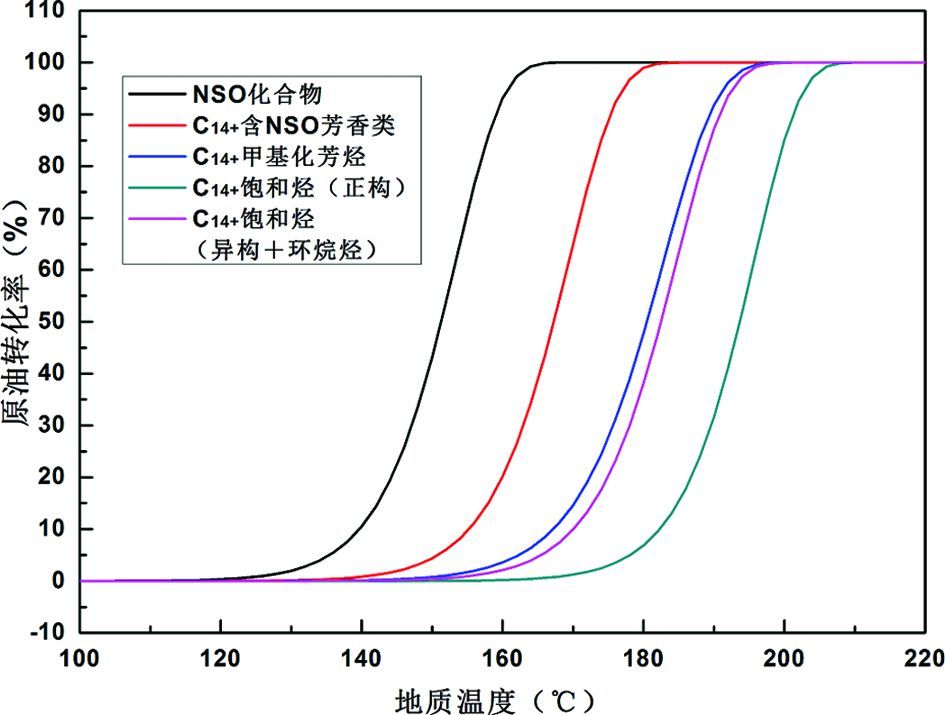
 下载:
下载:



